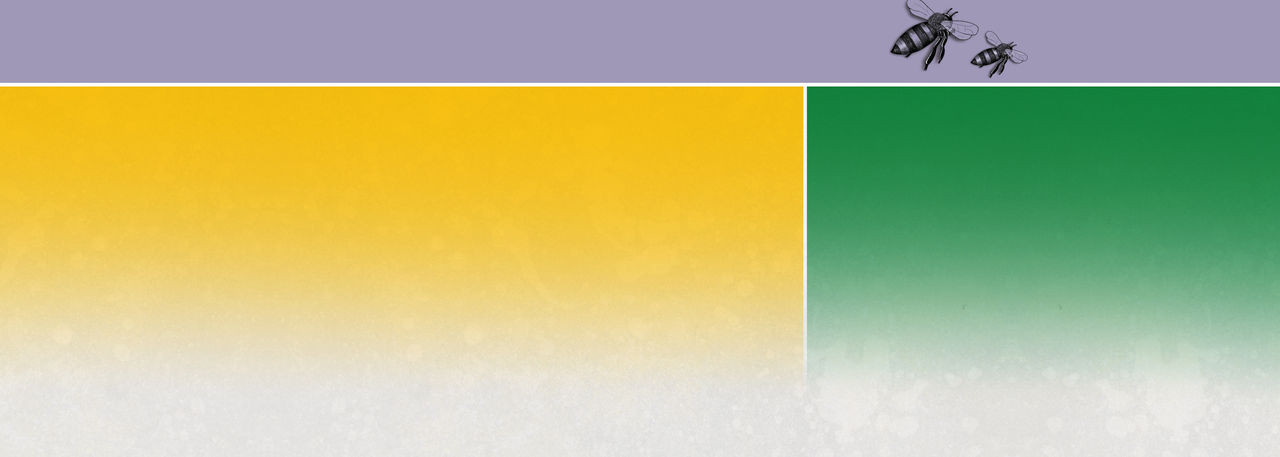It is easy to overlook the services provided by pollinators, living and non-living. Yet, without pollination, many plants could not reproduce. Food webs and, therefore, ecosystems would collapse. We would quickly run out of food, medicine, wood products — almost everything we need to survive on this green planet. The value of these busy pollinators is immeasurable. Consider these pollinator products and by-products:
- Food: One out of every three bites of food we take — including such favourites as bananas, apples and chocolate, and more than half the world's supply of dietary fats and oils — is the result of the successful work of pollinators We also get beverages, fibres, condiments, spices and medicines from plants that rely on pollination. And don't forget that wildlife also benefits from food made possible by pollinators.
- Forests: Trees are seed-bearing plants. For example, our maples, ashes and oaks of the Canadian South and East, the giant firs and cedars of the West, and the spruces of the Boreal North all rely on the process of pollination to renew themselves. Their success is our success, since we rely on wood for our homes, paper, jobs and recreation.
- Fresh Air: Green plants are the Earth's "lungs," taking in carbon dioxide and releasing oxygen. The majority of these plant species rely on pollination to renew themselves.
- Sparkling Water: Aquatic flowering plants help to purify water by taking up nutrients and contaminants. Their terrestrial cousins, rooted along shorelines and on steep slopes, help keep soil in place. Even cast-off leaves provide a service, forming a protective litter-layer that buffers soil from the impact of rain as it falls to Earth.
- Biodiversity: Healthy ecosystems rely on biodiversity and the process of pollination contributes on at least two levels:
- Genetic diversity, the hereditary differences between members of the same plant species, is made possible by the successful transfer of pollen from one plant to another. A plant population with a diverse genetic make-up is better able to fight off diseases and parasites, and can adapt more successfully to changing environmental conditions.
- The success of seed-producing plants in general increases the species diversity of ecosystems, which, in turn, makes those ecosystems healthier.
- Money: Pollination and its products help keep our economy healthy. It is estimated that insect pollination is responsible for $1 billion worth of fruits and vegetables in Canada every year.
A Bitter Reality
It's hard to imagine a world without seed-bearing plants. For eons, wind, water, hummingbirds, bees, flies and a host of other tiny creatures have performed their duties faithfully and with little fanfare. Yet the effectiveness of the pollinating agents, in fact the survival of many biotic pollinators, is put at risk by our activities.
- Loss of habitat for biotic pollinators. Our cities, homes and lawns — even our farm fields — have replaced the natural variety of flowering plants that once made up our landscapes It seems strange that vast fields of the same flowering crop plants would be considered poor habitat for some pollinators, but think about this: Crop fields are huge areas of one type of plant, all maturing at the same time, then being harvested and taken away. All the nectar and pollen — all the food for pollinators — is available only within a short period. This is like having a fridge full of food one day, but the next day it's gone — along with your home! Without habitat for feeding, mating and nesting, the population numbers and diversity of pollinators drop. Diverse landscapes and areas, such as provincial, territorial and national parks in different regions of Canada, help to ensure diverse habitats, which help to increase the variety of pollinators.
- Toxic chemicals. Efforts to combat agricultural pests have doubled the use of insecticides and herbicides since 1960. Insecticides, though intended for insect pests, can also kill beneficial insects, and they can stay in the environment for a long time. Even low pesticide levels can affect the memory, navigation and foraging abilities of honey bees. Herbicides, another type of poison aimed at undesired weeds, can destroy food that the pollinators rely on before and after crops have bloomed.
- Imported parasites and diseases. Domestic honey bee and wild bee populations are being hit hard by two small relatives of the spider The tracheal mite, recently arrived from South America, attacks the wind pipe or trachea of a bee until the bee suffocates The varroa mite, originally from Asia, attaches to the outside of the bee and sucks body fluids from its host, eventually causing death These two parasites were responsible for destroying 30 to 50 percent of the bee colonies in Eastern Canada in 2003. Scientists are currently puzzling over what they call "colony collapse disorder," a condition affecting honey bee colonies that is spreading across North America. The bees fly away from the colony in search of pollen and nectar and are never seen again. Whole colonies are left vacant and no one knows why yet, although a virus is suspected as a potential cause.
- Climate change. Climate change seems to be affecting all aspects of life on the planet and pollination is no exception. Among the consequences that could be attributed to climate change are:
- More imported parasites may be able to survive and prey upon beneficial pollinators.
- Some insect pollinators may see their ranges reduced. That may lead to a decrease in pollinator diversity and, eventually, a decrease in plant diversity.
- Bloom times of plants or insect activity times may be changed so that pollen production of the plant may not match up seasonally with the pollinator's activity.
Copyright Notice
© Canadian Wildlife Federation
All rights reserved. Web site content may be electronically copied or printed for classroom, personal and non-commercial use. All other users must receive written permission.
